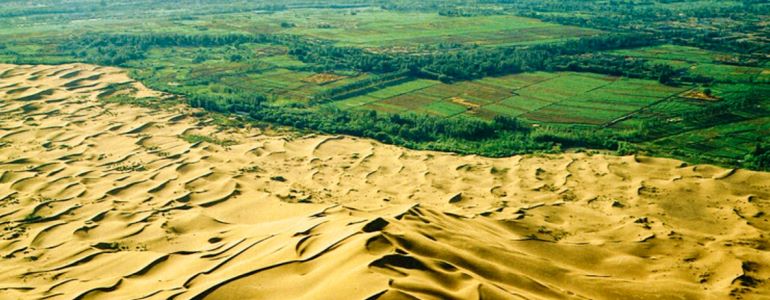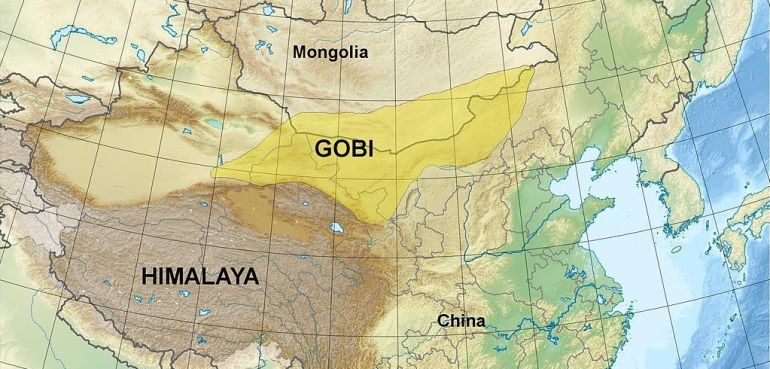Great Green Wall of China
- By Aleksandar Ristevski
- 5 May, 2020

Due to overpopulation, aggressive farming, deforestation China has a significant problem of land desertification. In the North of the country Gobi Desert, the driest and fastest-growing desert on Earth, taking over 3,600 km2 each year. Sandstorms can reach high speeds stretching hundreds of kilometres, so much the last few years have reached the capital, Beijing.

Climate Change has increased severity of the storms each year expanding desert and creating the largest population of “climate refugees” or “ecological migrants” on the planet as millions of people moving to the East into the big cities.
The Green Wall project started in 1978 planned to be completed by 2050, stretching over 4,500 km aiming to reduce deforestation, to stop desert expansion but also to increase arable land (land capable of being ploughed and used to grow crops).
Credits to Direct Daily
In China, only 12.6% of its total land area can be cultivated. Translating that 10% of the total arable land in the world supports over 20% of the world’s population.
In a few recent years, due to technological breakthroughs, it seems that the project is gaining momentum and achieving success - reclaiming land from the desert.
The way they do it is:
- creating sand barriers
– wooden sticks or straw 1x1 meter checkerboards - simplistic, natural, cheap and readily available
– polylactic acid (PLA) sand barrier - biodegradable and durable - planting grass and trees of the local area
- planting shrubs resilient to drought-resistant species as the cottonwood, Calligonum mongolicum and similar.
– planting by different teams, aeroplanes or drones - usage of underground water for irrigation
- usage of drop-by-drop irrigation
- technology to reduce evaporation
– a paste made of plant cellulose - mixed with sand helps retain water, nutrients and air. The research team from Chongqing Jiaotong University led by Professor Yi Zhijian invented a paste that is non-toxic, environmentally friendly, cheap and suitable for mass production. The cost of sand conversion is between US$3,373-6,071 per hectare.
– Nano clay - shown in TEDx Talk “From sand to soil in 7 hours” by Ole Morten Olesen
The main criticism of the project is the usage of monoculture making the forests vulnerable to epidemics, or change of weather. In 2008 20% of the trees have died and during Winter and the storms destroyed 10% of everything done that year - the World Bank encouraged China to seek quality, not quantity.
Chine methods can be improved by rewilding forests and using techniques as Holistic Management and Akira Miyawaki’s methodology.
The forest’s coverage in the North of China has been gradually increased and now is taking the area the extension of Western Europe. China has spent more than $8 billion to create the world’s largest artificial forest, with 66 billion trees. Places like Saihanba National Forest Park not long ago were desert land, but now they are one of the main attractions of North China.
Additionally, what was once a desert land, now is used to grow crops and fruits like watermelons, tomatoes, radishes and other - supporting the local economy and population.
But not all places have equal success, due to advancing desert storms, the wrong type of trees planted, corruption and project management failures - the World Bank has estimated that China is losing US$31 billion year. To this day desertification is the most significant environmental threat in China.
Only left to ask is:
Can Chine speed up the process and reforest the rest of deserts planting their portion of 352 billion of desired Trillion Tree targets in 3 years instead of next 30 years to offset China’s CO2 emissions?
Even more importantly can China significantly reduce its green gas emissions in next 5 years?
References:
– Three-North Shelter Forest Program
– Science Bulletins: China’s “Great Green Wall”—A Dust Antidote? (Jun 2012)
– China, the Green Wall which will stop the desert advancing
– Turning desert green: Kubuqi Desert (Sep 2017)
– Can the ‘Great Green Wall’ stop desertification in China? (Jan 2018)
You can read about a similar project started in Africa
